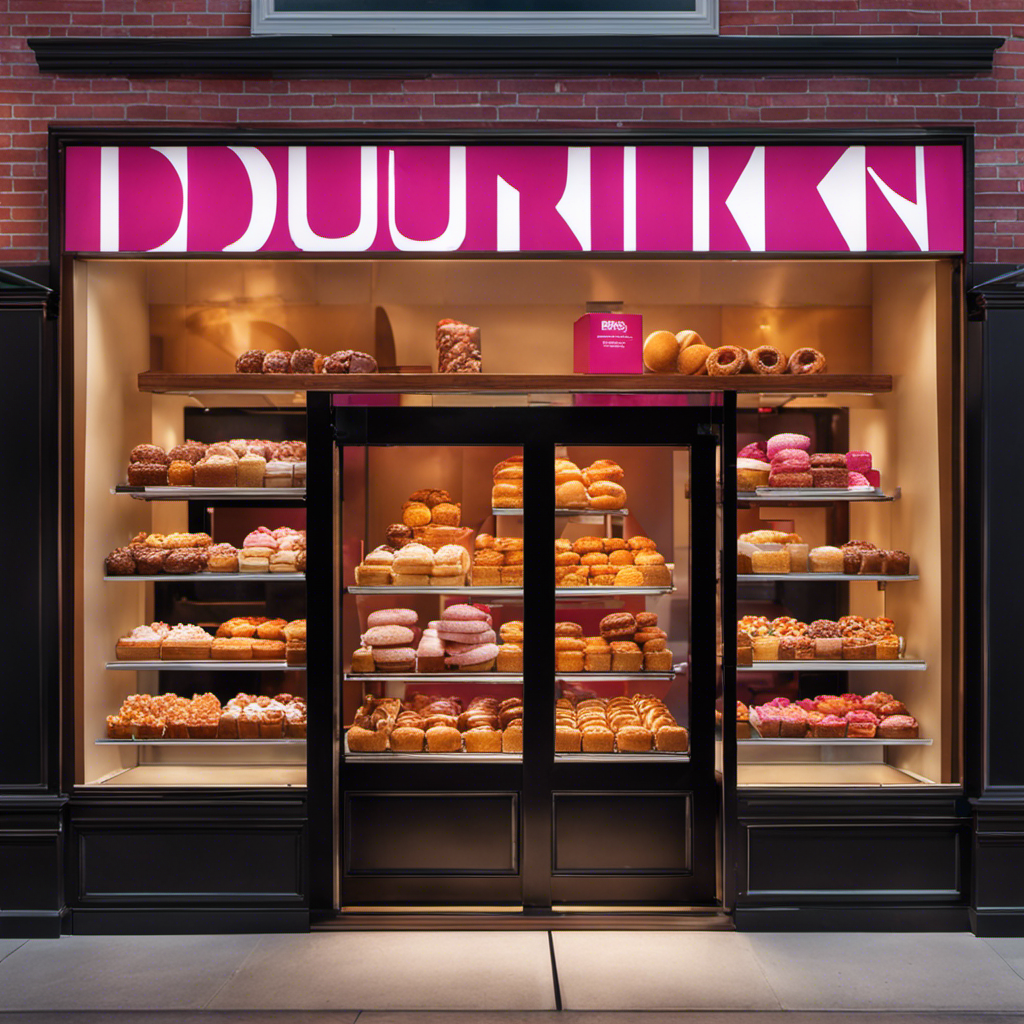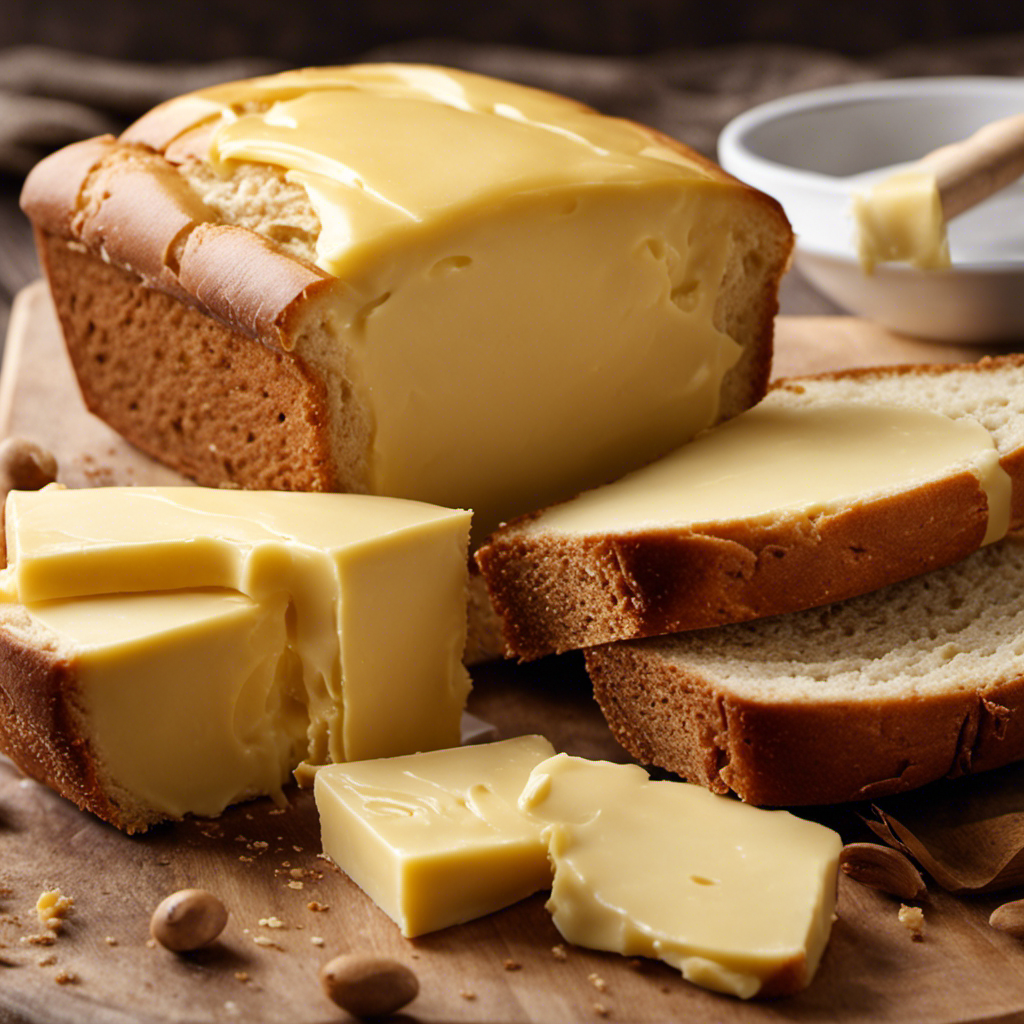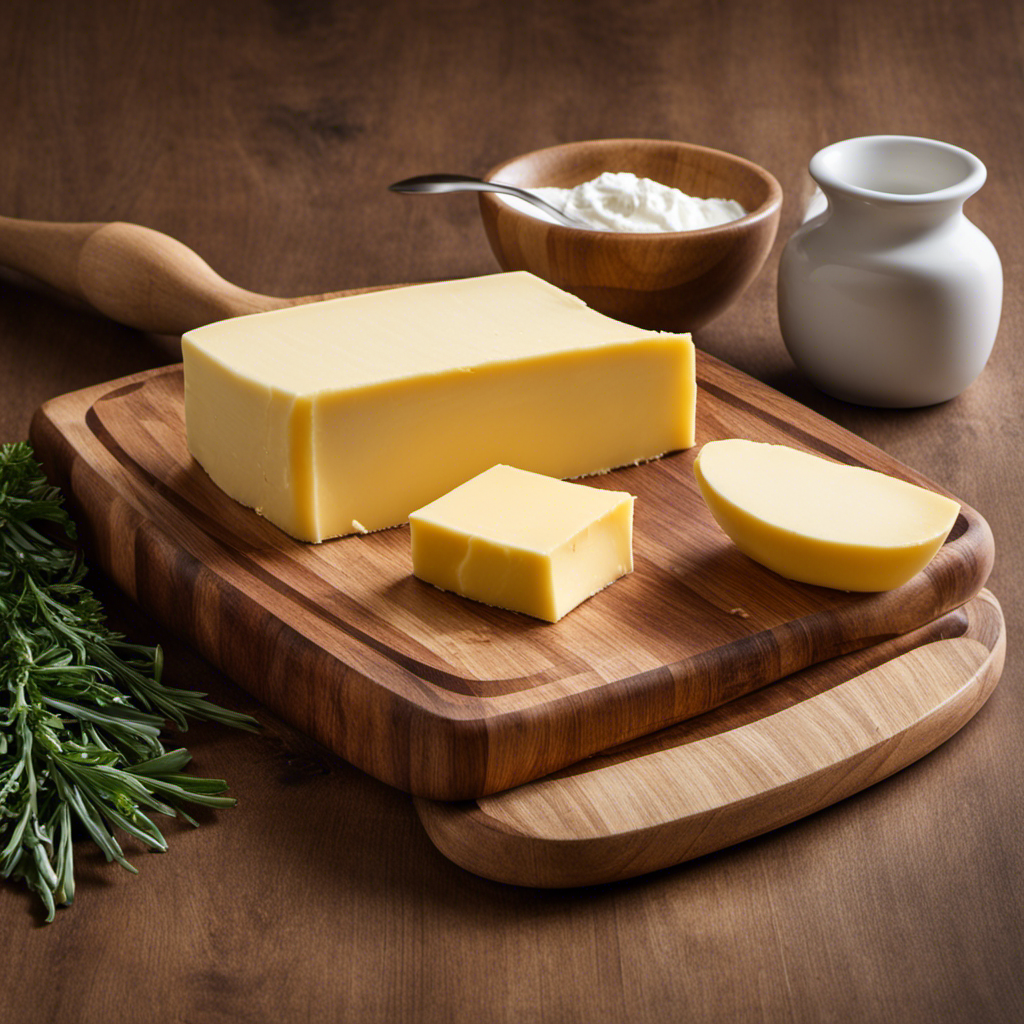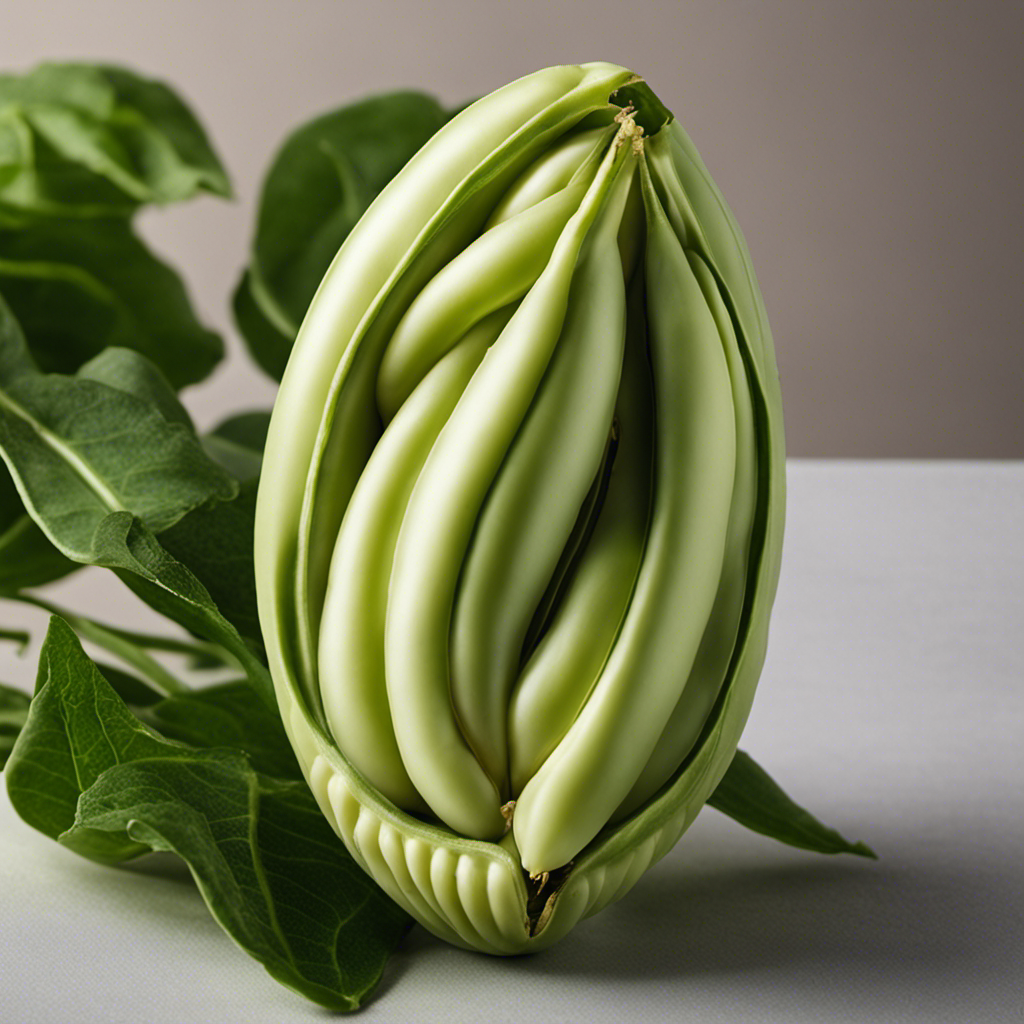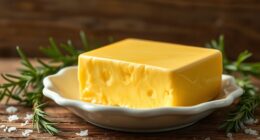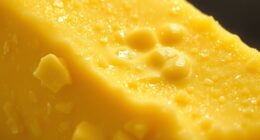As a loyal Dunkin’ fan, I am eagerly anticipating the comeback of the beloved Butter Pecan flavor. It’s like a comforting hug, a delightful combination of creamy butter and crispy pecans that tantalize my taste buds.
In this article, we will delve into the history of Butter Pecan at Dunkin, explore the reasons behind its absence, and uncover any potential release dates.
Join me on this quest for answers as we unravel the mysteries surrounding Butter Pecan’s comeback.
Key Takeaways
- Butter pecan has been a beloved staple at Dunkin for many years and has become increasingly popular among customers.
- The availability of butter pecan may vary depending on location and seasonal promotions, but based on popularity and customer demand, it is likely to be reintroduced in the near future.
- The absence of butter pecan at Dunkin has disappointed customers and may affect sales, giving competitors offering butter pecan a competitive advantage.
- Dunkin offers alternative flavors such as maple pecan, caramel swirl, and toasted almond for those looking for something different while waiting for the return of butter pecan.
The History of Butter Pecan at Dunkin
Did you know that Dunkin has a rich history with its butter pecan flavor?
The butter pecan flavor has been a beloved staple at Dunkin for many years, delighting customers with its creamy and nutty taste. Dunkin has even created various butter pecan recipes over the years, from butter pecan coffee to butter pecan donuts and ice cream.
Pecans, the star ingredient in butter pecan, also offer health benefits. Pecans are rich in healthy fats, fiber, and various vitamins and minerals. They have been shown to promote heart health, aid in digestion, and provide antioxidants.
The Demand for Butter Pecan
As a Dunkin employee, I’ve noticed the increasing popularity of Butter Pecan among our customers. Many customers have been requesting this flavor specifically, and it has become one of our top customer favorites.
However, the availability of Butter Pecan may vary depending on location and seasonal promotions.
Popularity of Butter Pecan
Have you noticed how popular butter pecan has become lately? It seems like everywhere I look, there’s a new butter pecan flavored treat popping up. From ice cream to coffee, this flavor has taken the world by storm. So why has butter pecan suddenly become the go-to flavor?
-
Popularity trends: One reason for the surge in popularity could be the current trend of nostalgic flavors. Butter pecan has a comforting and familiar taste that reminds people of their childhood.
-
Flavor variations: Another factor contributing to its popularity is the versatility of butter pecan. It can be incorporated into various desserts and beverages, allowing for endless creative possibilities.
-
Unique taste: Lastly, butter pecan offers a unique combination of rich, buttery notes with the nutty sweetness of pecans. This distinct flavor profile sets it apart from other traditional flavors, making it a favorite among many.
With its rising popularity, it’s no wonder that customers are requesting butter pecan more than ever. But will Dunkin’ bring back this beloved flavor? Let’s find out in the next section.
Customer Requests for Butter Pecan
You might be surprised by the number of customers who are requesting the return of a certain beloved flavor at Dunkin’.
The customer feedback regarding flavor preferences has been overwhelming, with a clear demand for the return of butter pecan.
This classic flavor, known for its rich and nutty taste, holds a special place in the hearts of Dunkin’ fans. It’s no wonder that customers are expressing their desire for its comeback.
The unique blend of buttery sweetness and crunchy pecans creates a delightful combination that is hard to resist.
Dunkin’ would be wise to pay attention to this customer feedback and consider bringing back the beloved butter pecan flavor, as it is a clear favorite among many loyal customers.
Availability of Butter Pecan
If you’re craving a taste of that creamy, nutty goodness, the availability of butter pecan flavor may leave you disappointed. Butter pecan is a popular flavor, known for its rich and indulgent taste. Unfortunately, finding butter pecan products can be a challenge.
Here are three reasons why butter pecan may not be readily available:
-
Limited demand: While butter pecan has a dedicated fan base, it may not be as popular as other flavors like chocolate or vanilla. Therefore, manufacturers and stores might prioritize those flavors over butter pecan.
-
Seasonal availability: Butter pecan is often associated with fall and winter, making it more likely to be found during those seasons. Outside of that time, it may be harder to come by.
-
Homemade options: Many people prefer making their own butter pecan recipes at home, using fresh ingredients and customizing the flavor to their liking. This may contribute to the limited availability of pre-packaged butter pecan products.
While the availability of butter pecan flavor may be disappointing, it also presents an opportunity to explore homemade recipes and enjoy the health benefits of butter pecan. With its combination of buttery richness and nutty goodness, butter pecan can provide essential nutrients like healthy fats, protein, and fiber. Incorporating butter pecan into your diet can support heart health, boost brain function, and provide a satisfying treat.
Potential Release Dates for Butter Pecan
There’s no official word yet on when butter pecan will be coming back to Dunkin’. However, based on the popularity of this flavor and the demand from customers, it is highly likely that Dunkin’ will reintroduce it in the near future.
Butter pecan is a classic flavor that can be combined with various other flavors to create delicious combinations. For example, it pairs well with chocolate, caramel, and even vanilla. Dunkin’ can leverage these potential flavor combinations to create new menu items and attract customers.
In terms of marketing strategies, Dunkin’ could promote the return of butter pecan through social media campaigns, limited-time offers, and collaborations with influencers or celebrities. These strategies would create anticipation and excitement among customers, driving foot traffic and boosting sales.
Rumors and Speculations Surrounding Butter Pecan’s Return
Rumors have been circulating about the highly anticipated return of the beloved butter pecan flavor at my favorite coffee shop. As a loyal customer, I can’t help but feel excited about the possibility of enjoying that rich, nutty taste once again. The absence of butter pecan has been keenly felt, not just by me, but by many others as well.
Here are three key points to consider regarding the butter pecan flavor trends and the impact of its absence on sales:
-
Customer Demand: The popularity of butter pecan flavor cannot be denied. It has a dedicated fan base that eagerly awaits its return every year. The demand for this flavor is consistently high, and its absence has left customers disappointed and seeking alternatives.
-
Competitor Advantage: During the time when butter pecan is not available, other coffee shops and brands that offer this flavor gain a competitive advantage. Customers who crave that specific taste may be inclined to switch their loyalty temporarily, affecting sales for the coffee shop in question.
-
Seasonal Appeal: Butter pecan is often associated with fall and winter seasons, making its absence during these times even more noticeable. It is a flavor that resonates with the cozy and comforting vibes of the colder months, and its return would not only satisfy customers but also potentially boost sales during this period.
Butter Pecan: A Customer Favorite
You can’t help but crave the rich and nutty flavor of butter pecan, a beloved favorite at your favorite coffee shop.
Butter pecan ice cream, with its combination of creamy butter and crunchy pecans, is a classic indulgence.
But did you know that butter pecan flavor variations extend beyond just ice cream?
Many companies have embraced the irresistible taste of butter pecan and incorporated it into other products as well.
In fact, I recently discovered a whole range of butter pecan-flavored treats at my local grocery store.
From butter pecan cookies to butter pecan coffee, there seems to be no shortage of options for butter pecan enthusiasts like myself.
And with the variety of butter pecan flavor variations available, there’s something to satisfy every craving.
Butter Pecan Alternatives at Dunkin
If you’re looking for a different flavor option, try exploring the alternative menu items at Dunkin. While butter pecan may be a popular flavor, it’s not the only one to satisfy your taste buds. Here are three alternatives that are worth a try:
-
Maple Pecan: This flavor combines the richness of pecans with the sweetness of maple syrup. It’s a perfect choice for those who enjoy a nutty and slightly sweet taste.
-
Caramel Swirl: If you’re a fan of caramel, this flavor is for you. It adds a smooth and creamy caramel taste to your favorite Dunkin beverages, giving them a touch of indulgence.
-
Toasted Almond: For those who prefer a slightly different nutty flavor, toasted almond is a great option. It offers a deliciously roasted almond taste that pairs well with coffee and other Dunkin treats.
While butter pecan may be popular, these alternatives provide a variety of flavors to satisfy different customer preferences. Give them a try and discover your new favorite Dunkin flavor!
Factors Delaying the Comeback of Butter Pecan
In examining the factors delaying the comeback of butter pecan at Dunkin, two key points to consider are ingredient supply issues and consumer demand fluctuations.
Firstly, ingredient supply issues can significantly impact the availability of butter pecan flavor. Whether it’s a shortage of pecans or other essential ingredients, these supply chain disruptions can cause delays in production and distribution.
Secondly, consumer demand fluctuations play a crucial role in determining the return of butter pecan. Dunkin needs to assess the level of demand for this particular flavor and weigh it against other flavors to make strategic decisions regarding its reintroduction.
Ingredient Supply Issues
Due to ingredient supply issues, the return of butter pecan to Dunkin’ may be delayed. These ingredient shortages have had a significant impact on menu offerings, causing disruptions in the availability of popular flavors like butter pecan. The shortage of key ingredients required to make the rich and creamy butter pecan ice cream has forced Dunkin’ to reassess its timeline for reintroducing this beloved flavor.
Limited availability of pecans: The scarcity of pecans, a crucial component of butter pecan ice cream, has made it challenging for Dunkin’ to source the necessary quantity of high-quality pecans.
Supply chain disruptions: The ingredient shortages have created disruptions in Dunkin’s supply chain, making it difficult to secure the required ingredients in a timely manner.
High demand for alternative flavors: While Dunkin’ works to resolve the ingredient supply issues, they have seen an increase in demand for other flavors on their menu, as customers seek alternatives to butter pecan. This surge in demand has put additional strain on their production capabilities.
As Dunkin’ continues to navigate these ingredient supply challenges, they are actively working towards resolving the shortages and bringing back the much-loved butter pecan flavor as soon as possible.
Consumer Demand Fluctuations
Amidst the ingredient supply issues, Dunkin’s menu has experienced fluctuations in consumer demand for alternative flavors.
As a market researcher at Dunkin’, I have been closely monitoring consumer preferences and conducting in-depth analysis to understand these fluctuations.
Our market research has shown that while traditional flavors like chocolate and vanilla continue to be popular, there has been a growing demand for unique and exotic flavors among consumers. Flavors like butter pecan, which were once considered niche, are now becoming more mainstream and sought after.
This shift in consumer preferences can be attributed to changing taste preferences and a desire for variety. Incorporating market research insights into our menu planning allows us to stay ahead of these demand fluctuations and provide our customers with the flavors they crave.
Customer Reactions to Butter Pecan’s Absence
Have you noticed how customers are reacting to the absence of butter pecan at Dunkin? It seems that many customers are experiencing disappointment and frustration due to the unavailability of their favorite flavor. Social media platforms have been flooded with posts and comments expressing their dissatisfaction.
Here are three key reactions that have been observed:
-
Outrage: Customers are expressing their anger and disappointment at Dunkin’s decision to remove butter pecan from their menu. Many feel that this flavor was a staple and a beloved option for years.
-
Nostalgia: Some customers are reminiscing about the good old days when they could indulge in a delicious butter pecan donut or ice cream at Dunkin. They miss the unique taste and are hoping for its return.
-
Alternative choices: In response to the absence of butter pecan, customers are seeking alternative flavors or even visiting other establishments that still offer butter pecan options. This shows the impact of a single flavor on customer loyalty and satisfaction.
Overall, the customer reactions to the absence of butter pecan at Dunkin reflect the strong emotional connection people have with their favorite flavors.
Anticipation Builds: Updates on Butter Pecan’s Return
After witnessing the overwhelming customer excitement and social media buzz surrounding the absence of Butter Pecan at Dunkin’, it is clear that anticipation for its return is building. Customers have taken to various social media platforms to express their longing for the beloved flavor. As a result, Dunkin’ has been providing regular updates on the return of Butter Pecan to keep fans informed and engaged. These updates have generated even more excitement and speculation among loyal customers. To further fuel the anticipation, Dunkin’ has been teasing glimpses of the flavor’s comeback through tantalizing images and videos. By leveraging the power of social media and customer anticipation, Dunkin’ has successfully created a buzz around the return of Butter Pecan, ensuring that customers eagerly await its arrival.
| Customer Excitement | Social Media Buzz |
|---|---|
| Overwhelming | Trending |
| Expressions of Longing | Engagement |
| Speculation | Glimpses |
| Eager anticipation | Buzz creation |
Frequently Asked Questions
How Long Has Dunkin Offered Butter Pecan as a Flavor?
Dunkin has offered the butter pecan flavor for a considerable time. Its longevity speaks to its popularity among customers. The rich and nutty taste of butter pecan has become a beloved choice for many Dunkin patrons.
Are There Any Other Popular Flavors That Dunkin Has Discontinued?
Customers have influenced Dunkin’s flavor offerings in the past, leading to the discontinuation of popular flavors like Blueberry Cobbler and Coffee Cake. However, Dunkin regularly introduces new flavors based on customer demand and market trends.
Will Butter Pecan Be Available in All Dunkin Locations When It Returns?
When butter pecan returns to Dunkin, its availability in new locations will have a significant impact on customer satisfaction. The addition of this popular flavor will surely please many customers.
Are There Any Health Benefits to Choosing Butter Pecan as a Flavor Option?
Choosing the butter pecan flavor at Dunkin can offer some health benefits. It contains essential nutrients like protein, fiber, and healthy fats from pecans. However, it’s important to enjoy it in moderation as part of a balanced diet.
Can Customers Request Dunkin to Bring Back Discontinued Flavors?
Customers’ influence on bringing back discontinued flavors is an integral part of Dunkin’s marketing strategies. By considering customer feedback and demand, Dunkin can gauge which flavors to reintroduce, enhancing customer satisfaction and driving sales.
Conclusion
As I wrap up this journey into the world of Dunkin’s Butter Pecan, I can’t help but feel like a traveler seeking a long-lost treasure. The allure of this delectable flavor has captivated customers for years, and the anticipation for its return is palpable.
While the exact release date remains a mystery, the rumblings of its comeback grow louder by the day. Like a phoenix rising from the ashes, Butter Pecan will soon grace our taste buds once again, bringing joy and satisfaction to all who indulge.
Stay tuned, my friends, for the return of this legendary flavor is imminent.
